- Established 1982 -HOME: www.hiltonpond.org
THIS WEEK at HILTON POND Subscribe for free to our award-winning nature newsletter (Back to Preceding Week; on to Next Week) |
| BIG BIRD WEEK AT HILTON POND March 2020 went out lamb-like at Hilton Pond Center, with light breezes and an overnight low of 45.3°F registering on our trusty digital weather station. Hopeful that gusty winds and sometimes heavy rainfall would subside for a while in April, we committed to trying to deploy our mist nets as many days as possible during the coming month. Spring is an important time for bird banders in the Southeast, for that is when many long-distance migrants that spent the last several months in the Neotropics make their way across the Piedmont Region toward breeding grounds throughout North America. After handling resident House Finches and Carolina Chickadees and Northern Cardinals all winter at the Center, we were eager to capture and band migratory species that eventually might be encountered much further north.
All text, maps, charts & photos © Hilton Pond Center Thus, on 1 April we got up early and opened our nets with enthusiasm, looking forward to whatever surprises might appear around Hilton Pond. Turns out a bird we captured for banding actually pulled an April Fool's Day prank on us--the trick being it refused to play fair while we tried to take its photo. The prankster was an adult male Red-winged Blackbird (RWBL, above)--a species some folks think of as a "trash bird" because it is so common in many locales and even occurs in thousand-bird flocks during winter. Red-wings are anything but common at the Center; in fact, the individual in the image above was just the 28th we've banded here in 39 years! We tried and tried to get a nice profile shot, but this was one of the jumpiest birds we've ever held. He also was biter and a pecker, hence our decision to don a glove during the picture-taking process--something we almost never do. RWBL mandible tips are almost needle-like and can draw blood easily unless the photographer wears protection. The claws are also quite sharp--all the better for a strong-toed red-wing to perch on cattail stalks in its typical marsh or pond-side nesting habitat.
All text, maps, charts & photos © Hilton Pond Center The Red-winged Blackbird's distinguishing field mark is sometimes hard to see if he's holding wings close, but when displaying to a female or a rival the male puffs up, vocalizes, and spreads his wings with gusto--revealing his Technicolor epaulets (above). In the hand we could see the bird's bright wing patch wasn't just crimson but also had overlapping feather layers of near-white and pale orange. (Incidentally, our RWBL's well-developed wing patch was a sign he was in at least his third year; an "immature" second-year male would have a smaller red patch speckled with black and without such prominent orange and white.) Despite this feisty blackbird's pecking, biting, and scratching, we were glad for our rare local opportunity to see these stunning colors up close. All text, maps, charts & photos © Hilton Pond Center
All text, maps, charts & photos © Hilton Pond Center Bright and early on 2 April we were at it again with nets and traps. We were happy to have banded the Red-winged Blackbird on April Fool's Day, but we also anticipated the capture of a very special bird on the 2nd--although we had no idea what species that bird might be. Sure enough, at 10:05 a.m. we looked out from our office window and watched as a medium-sized black and white and orange bird entered and tripped one of our seed-baited ground traps. Huzzah! We had just caught a second-year male Eastern Towhee (above) that truly was special in becoming the 70,000th bird banded at Hilton Pond Center since 1982! For the record, this was our 739th towhee banded in 29 years. His eye--which would have been muddy brown when he fledged last year--has by now changed to a reddish-brown that in 2021 will likely be a clear deep red. Because of their orange flanks, folks sometimes confuse towhees with American Robins, but the latter are not jet black on the back and don't have a dark bib. Robins also have relatively long yellow bills, while the towhee's is black and conical. (Female Eastern Towhees resemble males but have deep brown plumages in areas where their mates are black.) We're excited to reach 70,000 bandings and hope you'll help mark the milestone with a donation supporting all our on-going initiatives in environmental education, field research, and resource conservation. On the Hilton Pond Center's Facebook page we have started a Spring Fundraiser to which you can contribute; if you'd rather use PayPal, we're at funding@hiltonpond.org. You can also donate via Network for Good, or personal checks can be sent to 1432 DeVinney Road, York SC 29745. Since we're a non-profit, all gifts should be fully tax-deductible. All text, maps, charts & photos © Hilton Pond Center
All text, maps, charts & photos © Hilton Pond Center A new capture on 4 April at Hilton Pond Center was the season's first White-eyed Vireo (WEVI). Our photo above gives good evidence of why this bird is so-named--a crystalline white iris surrounding a jet black pupil. This species is fairly common locally, with 327 banded since 1982. Although we've never found a nest, we have handled several female WEVI with active brood patches that indicate they nest on or very near the property. Their overall breeding range is the eastern U.S. south of the Great Lakes. Although White-eyed Vireos overwinter along the South Carolina coast and south to the Yucatan, they depart Hilton Pond by the end of October at the latest. White-eyed Vireo is another of those species that was far more abundant when the Center's 11 acres were going through earlier tree-less stages of vegetational succession. WEVI pretty much avoid the canopy, and as generalized insectivores consume beetles, caterpillars, moths, and butterflies (plus spiders) that may be more abundant in toto in low-growing shrubs and brambles. All text, maps, charts & photos © Hilton Pond Center
All text, maps, charts & photos © Hilton Pond Center We had the Center's mist nets deployed early on the morning of 5 April, in part because radar scans showed good northbound bird migration beginning at dusk the preceding evening. It's amazing how bird flocks are so dense they show on radar designed to pick up rain, hail, and snow. Based on net results and observations through binoculars, it appears not many of those "radar migrants" got to Hilton Pond overnight, but we did catch a few species: 4 Chipping Sparrows, 2 American Goldfinches, and one each of Eastern Phoebe, Tufted Titmouse, Ruby-crowned Kinglet (female), Northern Cardinal (male), and Brown-headed Cowbird (male, above). Oh, and one other bird . . . . On the 5th we were running eight "house nets"--the really productive ones closest to the old farmhouse. We can observe most of these from our main office window, but we still get up every ten minutes or so to see what might be in each mist net. A net check shortly before noon yielded the kinglet, which we banded and released before returning to desk work. A few minutes later we could hear coming from outside a repetitive loud noise we did not recognize, and we could see through the trees that mesh on one of the nets was moving up and down. Of course, we quickly went out to investigate.
All text, maps, charts & photos © Hilton Pond Center The racket continued as we approached the net, in which was snared a very loud black and and white and red bird that was instantly recognizable as a Pileated Woodpecker (PIWO)--an extremely uncommon species here at Hilton Pond. Working carefully, we managed to get this crow-sized bird out of the net without getting pecked, although the woodpecker's strong toes and sharp claws did a number on both hands. (Notice the PIWO's foot has a "zygodactyl" configuration of two toes in front, two in back; this is an adaptation that provides more secure footing while climbing vertical tree trunks. Passerines--the songbirds--are "anisodactyl" with three toes front, one back, adapted for perching on horizontal branches.)
All text, maps, charts & photos © Hilton Pond Center We brought the PIWO inside to the banding table and called for wife Susan to come see. (We wish we had a photo of the startled look on her face when we showed her our catch.) PIWO take a rather large metal leg band (Size 4) that is difficult to open, so Susan's assistance with that task was very helpful. Then it was a matter of closing the band around the woodpecker's leg--which we accomplished by hugging the bird so it couldn't struggle. Let us assure you: Pileated Woodpeckers are amazingly strong, and it wasn't easy keeping this one calm.
All text, maps, charts & photos © Hilton Pond Center The whole banding process only took a couple of minutes, after which Susan snapped numerous photos while we safely held the pileated. She insisted on one of the bander and the woodpecker together (below).
All text, maps, charts & photos © Hilton Pond Center So how uncommon are Pileated Woodpeckers at Hilton Pond Center? Well, we've had only about a half-dozen sightings since 1982, and just ONE previous banding--almost exactly 30 years ago on 30 April 1990. That first bird, like this one, was a male with a red "mustache" below the bill. (The streak is black in females.) Needless to say, it was a real treat to capture, band, and release unharmed this local rarity, which helps explain the grinning bander in the photo above. Quite a bird. Quite the day. All text, maps, charts & photos © Hilton Pond Center
All text, maps, charts & photos © Hilton Pond Center Despite the previous day's unexpected capture of that locally elusive Pileated Woodpecker, we elected not to deploy mist nets on 6 April at Hilton Pond Center. Since we hadn't had rain in a few days, it was more important to do the first post-winter cut of the nature trails. In 1982 when we moved to the 11 acres that became the Center, most of the property was grassy old field, with a few big established trees near the old farmhouse. We decided early on we would NOT be cutting 11 acres of grass and quickly established a laissez-fair policy of land management. But the REAL item of interest on the 6th was this: For the third spring in a row a very large bird soared over Hilton Pond, showing its white head and unmistakable five-foot W-shaped wingspan. We speak here of an Osprey, the so-called "fish eagle" that has a nearly worldwide distribution. Each April since 2018 an Osprey has appeared overhead at the Center, gliding in from the southeast and into view from our office window. And every year, the Osprey has taken a little break, perching in the same big Loblolly Pine on the northwestern edge of the pond (above). In fact, the Osprey settles in on the very same limb of that very same tree! Could it be the very same bird, pausing for a while as it heads further north along the very same migratory path? We'll never know for sure, but the circumstantial evidence for all this is very strong. Just in case, we'll say "Welcome home, Osprey. See you again next spring!" All text, maps, charts & photos © Hilton Pond Center
All text, maps, charts & photos © Hilton Pond Center All the birds mentioned above were new captures, but we would be remiss in not mentioning a few other individuals we banded at Hilton Pond Center in previous years and recaptured during the just-finished period. Most remarkable were two males--a Chipping Sparrow (CHSP, above) and an American Goldfinch (AMGO)--both of which were banded as adults in 2014 and are now after-seventh-year birds in at least their eighth year. Although CHSP are sexually monomorphic (with sexes looking alike), we were able to sex this particular recapture because he had a swollen cloacal protuberance--where sperm are stored temporarily--indicating he was breeding-ready. (Females lack this characteristic.)
All text, maps, charts & photos © Hilton Pond Center Close behind those two birds in age were a duo of White-throated Sparrows (WTSP, above)--a male and a female--banded a fortnight apart in 2016 as second-year birds and both recaptured on 9 April. They're now sixth-year individuals. (Incidentally, sexually monomorphic WTSP can sometimes be aged via wing measurement even when not in breeding condition, with males being slightly larger.) A third sixth-year bird was a Hermit Thrush (HETH) banded as hatch-year in December 2015. Local recapture of WTSP and HETH is particularly significant because both species depart each spring and come back in fall. This makes them fine examples of site fidelity among long-distance migrants. Yes, activity at the Center during the first ten days of April 2020 included, among other things, the return of several old birds, the capture of our 28th Red-winged Blackbird, the netting of our second-ever Pileated Woodpecker, and the handling of that colorful male Eastern Towhee that became our 70,000th bird banded locally since 1982. All things considered, we think we're justified in calling this a "Big Bird Week at Hilton Pond." All text, maps, charts & photos © Hilton Pond Center
Checks also can be sent to Hilton Pond Center at: All contributions are tax-deductible on your Don't forget to scroll down for Nature Notes & Photos, |
|---|
|
"This Week at Hilton Pond" is written and photographed by Bill Hilton Jr., executive director of Hilton Pond Center for Piedmont Natural History
|
|
|
Please refer "This Week at Hilton Pond" to others by clicking on this button: |
|


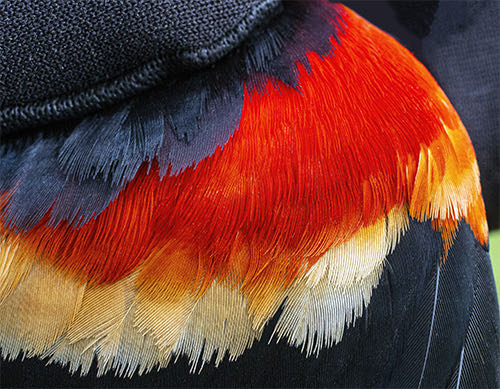

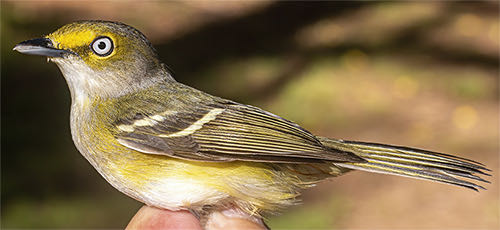
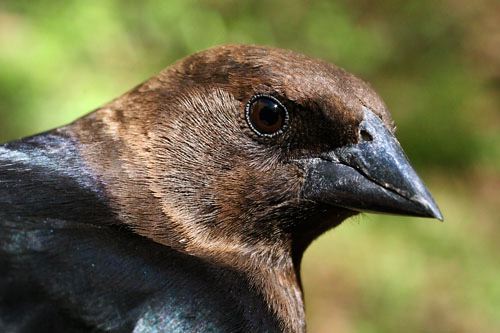

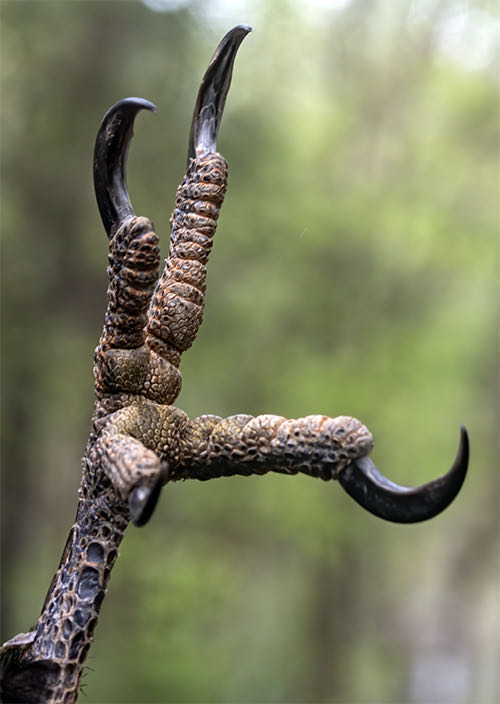
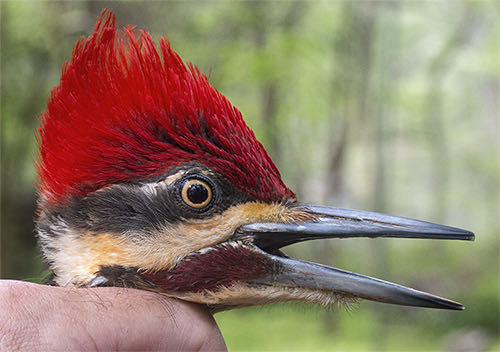
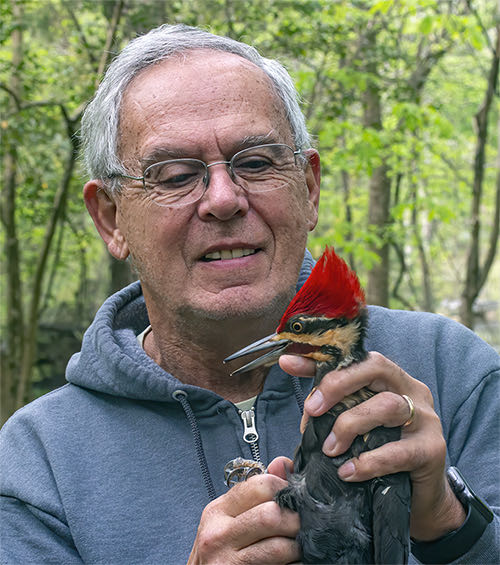
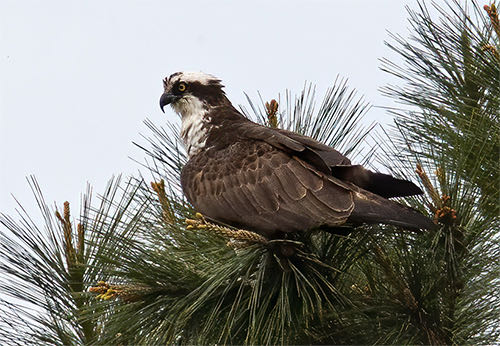
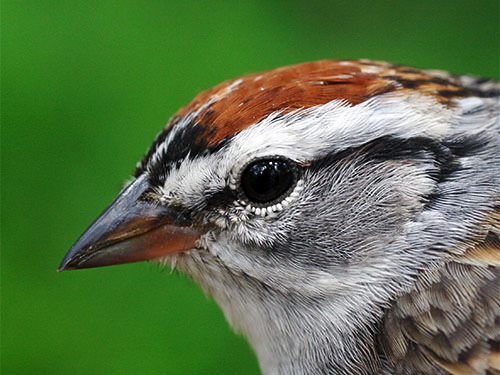











 Please report your
Please report your